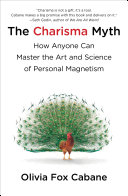

The central premise of 'The Charisma Myth' is that charisma is not an innate trait, but rather a skill that can be developed and honed over time. The author, Olivia Fox Cabane, presents charisma as a combination of presence, power, and warmth. By practicing specific techniques, individuals can enhance their ability to connect with others, influence them, and create a lasting impression. This idea challenges the common belief that some people are just 'born charismatic' and encourages readers to adopt a growth mindset. The book provides practical exercises aimed at improving one’s presence in conversations, exuding confidence, and showing genuine warmth, all of which contribute to a more charismatic persona. The understanding that charisma can be cultivated opens doors for personal and professional development, allowing anyone to improve their social interactions and leadership capabilities.
Continue readingPresence is one of the three pillars of charisma outlined in the book. It refers to being fully engaged and attentive in the moment, which fosters deeper connections with others. Cabane emphasizes that when you are present, you can listen actively, respond thoughtfully, and make others feel valued. Techniques for enhancing presence include mindfulness practices and body language awareness. The author discusses how distractions, such as phones or wandering thoughts, can detract from one’s presence and, consequently, charisma. By learning to be more present, individuals can improve their interpersonal relationships and become more effective communicators. The emphasis on presence also highlights the significance of non-verbal cues and how they can impact the perception of charisma.
Continue readingPower is another essential component of charisma. Cabane explains that it is not about being domineering or aggressive, but rather about projecting confidence and authority. Power in this context refers to the ability to influence others and command respect. The book outlines various strategies to convey power, such as adopting strong body language, maintaining eye contact, and using a confident tone of voice. Cabane also discusses the balance between power and warmth, as too much power without warmth can come off as intimidating. By mastering the balance between these two elements, individuals can enhance their charismatic appeal and effectively lead and inspire others.
Continue readingWarmth is the third pillar of charisma and is crucial for building rapport and trust. Cabane highlights that warmth is about being approachable, kind, and empathetic. It involves showing genuine interest in others and making them feel comfortable. The author provides techniques to enhance warmth, such as active listening, smiling, and using open body language. The importance of warmth cannot be overstated, as it often determines how people perceive and respond to you. In professional settings, leaders who exhibit warmth are more likely to foster loyalty and collaboration among team members. This idea underscores the notion that charisma is not just about personal magnetism but also about how one makes others feel.
Continue readingMany individuals struggle with anxiety and self-doubt, which can hinder their ability to express charisma. Cabane addresses these common barriers and provides techniques to overcome them. She emphasizes the importance of self-awareness and reframing negative thoughts. The book offers exercises to build confidence, such as visualization techniques and positive affirmations. By addressing anxiety and self-doubt, individuals can free themselves from the mental constraints that prevent them from being charismatic. This focus on mental well-being is critical, as it allows readers to approach social interactions with a more positive and confident mindset.
Continue readingStorytelling is a powerful tool for enhancing charisma. Cabane explains that sharing personal stories can create emotional connections and engage audiences more effectively. The author provides guidelines for crafting compelling narratives that resonate with others, emphasizing the importance of authenticity and relatability. Charismatic individuals often use storytelling to illustrate their points, inspire others, or convey their values. By mastering the art of storytelling, readers can enhance their communication skills and make a more significant impact in both personal and professional settings. This idea reinforces the notion that charisma is not just about how one presents themselves but also about how they connect with others through shared experiences.
Continue readingThroughout the book, Cabane provides a variety of practical exercises designed to help readers develop their charisma. These exercises range from simple techniques for improving presence and warmth to more complex practices for storytelling and power dynamics. The author encourages readers to practice these exercises in real-life situations to see tangible improvements in their social interactions. By taking a hands-on approach, the book empowers individuals to actively engage in their personal development journey. The inclusion of practical exercises makes the book not just theoretical but also actionable, allowing readers to implement what they learn immediately.
Continue reading